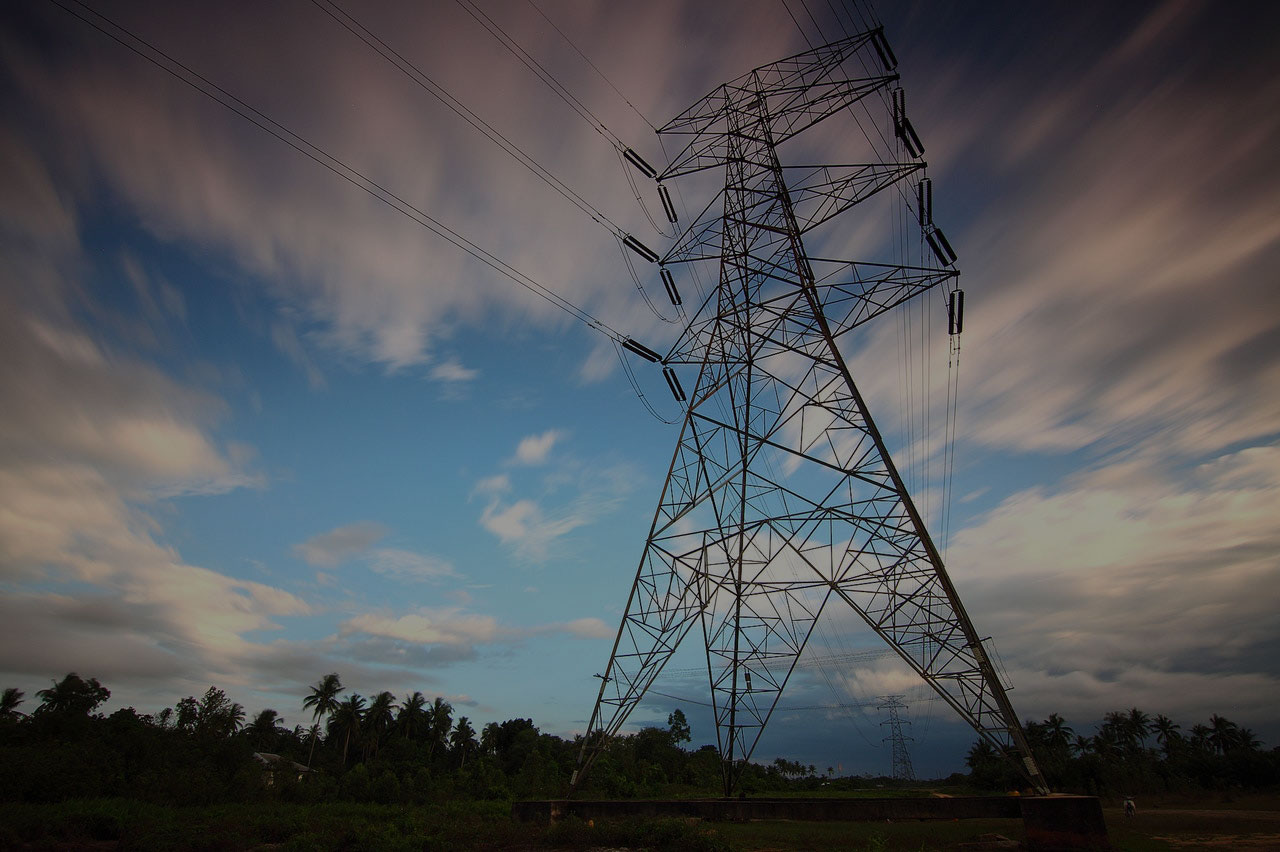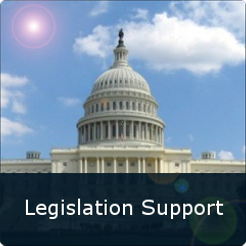When an industrial customer is willing to make a commitment to be available to interrupt during system emergencies over an extended period of time (e.g., two or more years), this deferral of capacity creates further value to the utility in the form of avoided long-term capacity costs. In addition, even in the short term, interruptible load can provide value to electric utilities by providing operating reserves to the extent the load can be interrupted on very short notice (e.g., ten minutes or less). It can also provide a further economic benefit to the electric utility if that load can be interrupted during non-emergency conditions when spot market prices for electricity, or the cost of electricity production, is very high. All of these benefits reduce the cost of electric utilities to serve customers, which in turn lowers the cost of electric service for all electric customers.
Because interruptible power is generally recognized to be a lower quality service than firm power, interruptible power rates should be lower than the firm power rates charged by electric utilities. Interruptible power provides an industrial customer the opportunity to reduce its operating costs in exchange for allowing its electric utility to interrupt electric service when generating capacity is needed to serve firm customers. Thus, this can create a win-win arrangement that benefits the utilities as well as customers. However, the win-win arrangement is not guaranteed. The costs to interruptible customers of power interruptions are not trivial. Interruptions cost customers through lost production, increased operating costs and the costs of preparing for interruptions (e.g., installation of interruption notice equipment and development of interruption procedures and protocols) and responding to interruptions (e.g., adjusting production schedules). Therefore, interruptible customers need adequate compensation to make interruptible service a feasible option for them and to encourage participation as resources available to their electric utilities.
The encouragement of interruptible loads to participate as demand response resources available to electric utilities is consistent with the Federal Energy Regulatory Commission's (FERC) current policy on demand response. On page 1 of its June 17, 2010 National Action Plan on Demand Response, FERC states the following:
"Demand response is a valuable resource for meeting the nation's energy needs. By lowering the peak demand for energy, demand response programs reduce the need to construct new, expensive generation units. However, according to a Federal Energy Regulatory Commission (FERC or Commission) staff report - A National Assessment of Demand Response Potential (National Assessment), submitted to Congress in June 2009 – current demand response programs tap less than a quarter of the total market potential for demand response.
FERC staff has worked with stakeholders to develop this National Action Plan on Demand Response (National Action Plan), which sets out actions to achieve the demand response potential in the United States. Congress required FERC to develop such a plan in the Energy Independence and Security Act (EISA) of 2007. Because current efforts have missed a significant portion of the cost effective demand response potential, it is evident that action needs to be taken to either create new programs or expand existing ones where cost-effective."
Interruptible service may take the form of providing the utility operating reserves or system integrity services at times when the electric system is stressed. Accordingly, some electric utilities provide their interruptible customers with a menu of interruptible rate and service options. Interruptible service options may include: (1) notice provisions (or no notice in some cases); (2) limits on frequency and total interruption duration, e.g., a specified number of interruptible days and hours in a month, season or year; and (3) restrictions on how soon an interruption can be called after a prior interruption (i.e., "re-strike" provisions). An industrial customer may choose both firm and interruptible electric service from its utility at the same location. This is useful when a customer has some process or load that cannot be interrupted, in addition to load that can be interrupted.
In return for the ability to interrupt an industrial customer load, an electric utility typically charges an interruptible industrial customer a lower demand charge as compared to the demand charge applicable to firm customers on the utility's system, or provides some other economic incentive to the interruptible customer. Typically, a credit is applied by the electric utility to the firm demand rate to arrive at the interruptible demand rate charged to interruptible load. This credit is intended to reflect the value of the interruptible load to the electric utility. Electric utilities should not, and generally do not, build new generation to serve interruptible load. As a utility's firm electric rates increase as the result of new investment in generation and transmission resources, it is important to ensure that the electric utility is properly valuing the credit used to determine interruptible demand rates.
A growing trend observed among some utilities is to under-value the credit paid to industrial customers for interruptible load, particularly in the recent temporary economic recession, where electrical supply is outstripping demand. This electric supply situation has caused the market price for electricity to decline. Rather than valuing interruptible load on the basis of the utility's long-term avoided costs to serve firm customers, including the costs associated with the construction and/or purchase of long-term firm capacity resources, some utilities are attempting to value interruptible loads on the short-term avoided costs of market purchases. This approach undervalues the interruptibility of customers who are willing to commit to interrupt and, therefore, results in the customer paying a rate higher than what is reasonable. Because the capacity value implicit in current electric market pricing is typically below the capacity value of the long-term resources constructed or purchased by the utility to serve firm load, a short-term valuation does not properly reflect the capacity value of interruptible load.
By proposing a short-term valuation for interruptible load, utilities are effectively arguing that while rates to serve firm customers are increasing due to the construction and purchase of firm capacity resources, the value of interruptible load has decreased. This argument is both counter-intuitive and incorrect. Though wholesale market prices for electricity have plummeted since mid- 2008, triggered by a drop in electrical demand (primarily industrial load) and the market price of oil and natural gas, economic theory tells us that this current remission -- brought on by the current state of the economy -- will only be temporary. Natural gas and electricity prices will rebound as demand for these products eventually recovers. In addition, over time, in order to sustain the market, the market price for electricity will need to rise to the levels necessary to support the all-in cost of the least-cost source of electric supply that is readily available.
What is an appropriate valuation of industrial customer interruptible load that is committable to an electric utility on an extended term basis? One reasonable approach to valuation is to use the cost of a combustion turbine peaking unit. This is reasonable because this type of generation generally has the lowest installed cost of the generation capacity that is widely available. This approach is used by electric utilities located in many different jurisdictions. Recent cost estimates for the value of new combustion turbine capacity range from around $6 to $12 per kW-month. When valuing interruptible load in this way, electric utilities should properly account for all factors that affect the value of the interruptible resource relative to the value of the new combustion turbine. For example, reduction in transmission losses and generation planning reserves should be taken into account. These factors directly favor demand response resources such as interruptible load over generation resources. In addition, other less direct factors should be considered.
The valuation of interruptible power is often contentious. BAI has been involved on behalf of large customers in several proceedings where utility interruptible credit valuations are being proposed and analyzed. The common goal in these cases is to properly value the interruptible load as a resource comparable to generation resources, and to determine an interruptible credit based on the utility's long-term avoided costs, rather than temporarily depressed short-term avoided costs. The comparable treatment of interruptible resources committed to an electric utility on an extended term basis with long-term generation resources is consistent with current FERC policy. At page 75 of its June 17, 2010 National Action Plan on Demand Response, FERC states the following:
"New tools and methods should be developed to directly incorporate demand response into dispatch algorithms and resource planning models. These tools and methods are important to better capture the capability of demand response to serve as an alternative to building new generation and transmission and to act as a resource to alleviate transmission congestion. FERC's Order No. 890 could be instructive in the development of these tools and methods. In Order No. 890, FERC stated that "where demand resources are capable of providing the functions assessed in a transmission planning process, and can be relied upon on a long-term basis, they should be permitted to participate in that process on a comparable basis."(emphasis added)"
Consequently, it is important for industrial customers with interruptible capability to be engaged in utility regulatory matters related to the valuation of interruptible credits.
BAI believes these issues will be prevalent as long as market prices for electric capacity continue to be low. Industrial customers need to be diligent to ensure that their interruptibility is valued based on the long-term avoided cost at their utility, and on other relevant factors.





 regulated and competitive energy markets. We create value for our clients by developing and helping to implement creative solutions. Because we do not own or market a commodity, and do not have financial arrangements with those who do, we are able to provide objective advice for our clients. Many of our professionals have been in practice for more than 25 years. Our clientele consists of industrial, commercial and institutional users of electricity, natural gas, coal, fuel oil, steam, water and wastewater services.
regulated and competitive energy markets. We create value for our clients by developing and helping to implement creative solutions. Because we do not own or market a commodity, and do not have financial arrangements with those who do, we are able to provide objective advice for our clients. Many of our professionals have been in practice for more than 25 years. Our clientele consists of industrial, commercial and institutional users of electricity, natural gas, coal, fuel oil, steam, water and wastewater services. 




